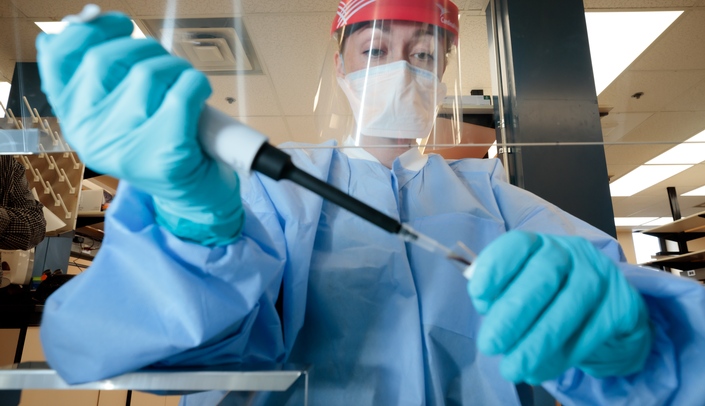As we consider how to face down this impending crisis together, we feel it is important to share our current understanding of what we know and don’t know about COVID-19.
What we know:
- Nebraska is currently tied for 6th among U.S. states for daily cases per capita.
- Many states and countries have reduced their community case rates to near zero by adhering to basic precautionary behaviors.
- COVID-19 is easily spread from person-to-person.
- Close and prolonged contact carry the highest risk of transmission, but the SARS-CoV-2 virus can spread through the air and infect people at distances, especially in enclosed spaces with poor ventilation.
- Transmission is sporadic – a small proportion of infected individuals infect large numbers of people. Talking, singing and yelling appear to increase the risk of transmission.
- Infected people without symptoms can be highly infectious and may cause the largest number of clusters.
- Children and young adults usually do not develop severe disease; however, hospitalizations and deaths do occur in these age groups. This past week Douglas County mourned the death of a six-year-old stricken with COVID-19.
- The disease is much more severe in the elderly. In Nebraska, 20% of our seniors over the age of 65 diagnosed with COVID-19 have required hospitalization, and over seven percent have died. We have fared better than most states in that regard, as we avoided a substantial number of large outbreaks in nursing homes and prevented our hospitals from becoming overwhelmed.
- Young people, while suffering fewer ill effects of disease, are a primary driver of transmission in community outbreaks. In August and September, colleges were at the center of community outbreaks across the country.
- Finally, face coverings have proven capable of limiting virus shedding and reducing transmission risk, particularly when worn by all members of the community.
What we think we know:
- Early limited data suggested that school-aged children were not easily infected and were not important spreaders, but more recent information points to the fact that children get infected at similar rates as adults.
- Larger recent studies point to children as important sources of transmission to other children and adults in the community. In fact, adolescents and younger children may pose the highest risk for community transmission, as infection likely is not symptomatic and often missed.
- Judging cause and effect from community actions is difficult with COVID-19, because it appears that long lag times occur between initiation of community epidemics, rise in confirmed case counts, and increases in hospitalizations and deaths.
- On our current trajectory, Nebraska’s health system is likely to be overwhelmed by late fall or early winter.
What we don’t know:
- Numbers of confirmed COVID-19 cases linked to school transmission have been relatively low since the school year began, but we may be missing a large proportion of COVID-19 cases in schools due to a lack of testing.
- We are testing school-aged children at a far lower rate than adults. If most children have minimal to no symptoms, then the majority may go untested and unrecognized.
- COVID-19 most commonly presents as a disease of the airways and lungs, but we increasingly are recognizing additional neurologic, vascular, and other complications. We need to learn more about the short- and long-term dangers in so-called "long haulers" and others with unexpected problems.
